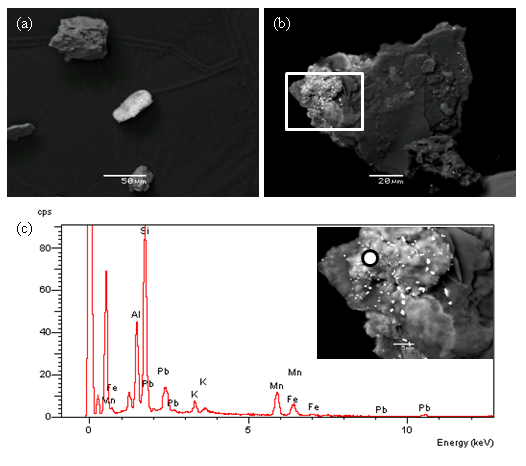


Environmental risk assessment in the urban environment of Athens is of particular significance as about one third of the Greek population lives in the capital. Research topics of our group are currently dealing with aspects of sources, pathways and targets of potentially harmful elements that have been identified in the urban environment.
HEAVY METAL DISTRIBUTION IN SOIL GRAIN SIZE FRACTIONS AND HOUSE DUST
Potentially harmful elements within the urban environment tend to accumulate in the fine fraction of the soil with consequences on the estimation of human and biota exposure to the contamination. The importance of this factor has particular significance especially in arid areas like Athens. Another important parameter for the estimation of the elemental sources and pathways is the fractionation of heavy metals in soils which also influences their mobility and environmental availability. A common way of testing this is the application of in-vitro laboratory tests, using single or sequential extractions, based on chemical reagents capable of releasing metals bound to specific soil phases. Direct microscopic observation of metal-bearing soil grains also provides useful information. Redistribution and transport of metal-containing fine soil particulates has also been recognized to have a significant contribution to house dust, depending on a variety of site-specific factors and methodological approaches. House dust is composed of finer particles, which are more mobile and metal enriched compared with external materials, and adhere to skin more effectively. It is thus a significant exposure medium for risk assessment and our ongoing research focuses on the characterization of this environmental medium.

LEAD ISOTOPIC SIGNATURE OF ATHENS SOIL AND HOUSE DUST
Identification of contamination and source apportionment of potentially harmful elements within the surface urban environment is a challenging task mainly because of coexistence of multiple factors contributing to the elevated concentrations. In a recent study, we performed a combined investigation of Pb isotope composition in different particle sizes and chemical fractions of urban soil in Athens. The data were coupled with Pb isotope ratios in samples of house dust as well as samples of rather confined settings in order to provide insight on source apportionment of Pb in the specific urban environment. The results, in combination with previous research on elemental spatial distribution patterns and elemental mobility helped to further constrain the factors that control metal enrichment in soil, to exemplify the sources of Pb in bulk soil as well as different particle size and chemical fractions, and to explore the relationship between soil and house dust with respect to Pb sources. In a wider context, this research contributes to the development of a comprehensive database of the surface environment of urban areas. Inclusion of Pb isotope data in such environments provides the basis for further actions in environmental risk assessment.